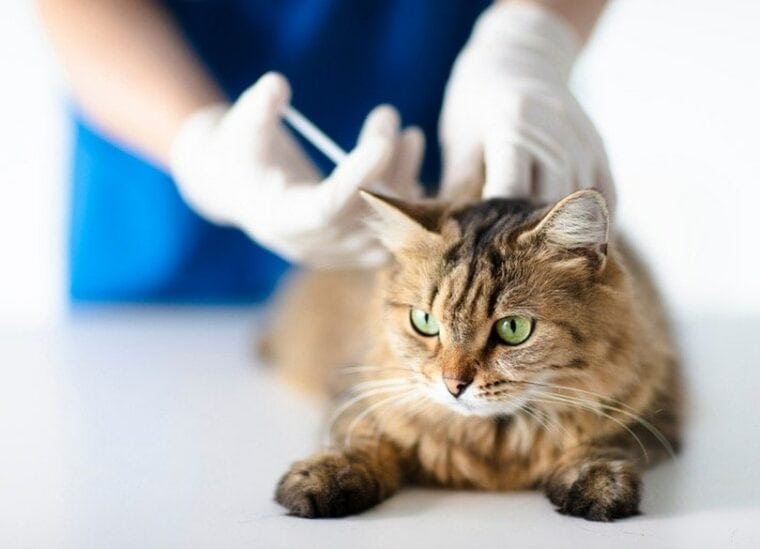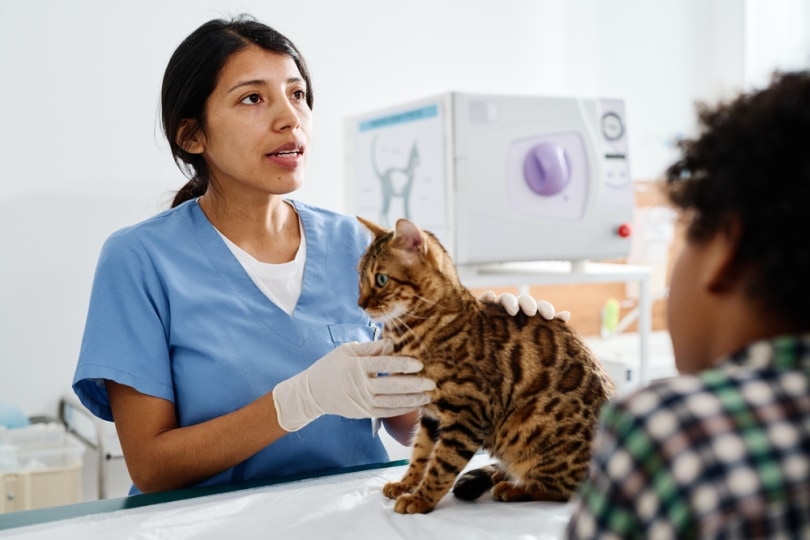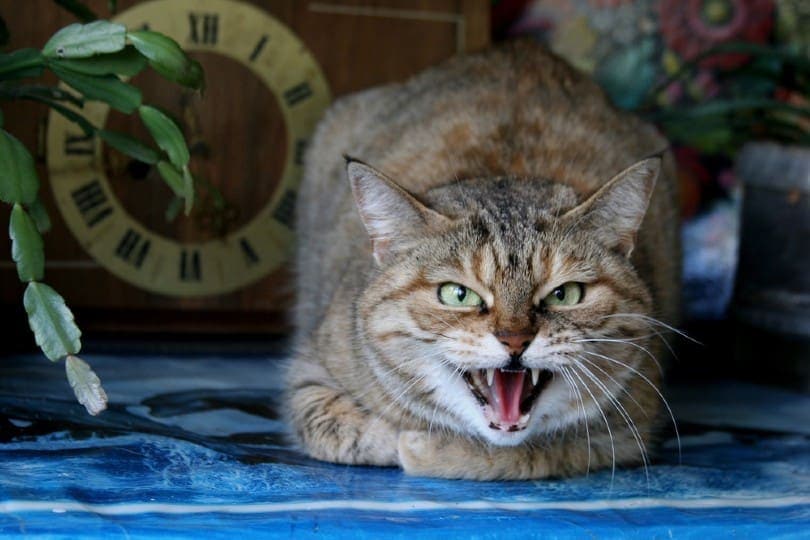
Rabies is a serious viral disease that is generally found in wildlife but can easily be transmitted to any mammal, including domesticated pets and even humans. The rabies vaccination is considered a core vaccination in the United States and key to the prevention of this terrible disease.
Depending on state regulations and which type of rabies vaccine has been administered, the shot will either be required annually or once every 3 years. This is something your veterinarian will go over when they vaccinate your cat.
 Rabies Vaccine
Rabies Vaccine
The Rabies vaccine is one of the four current core vaccines on the schedule for cats and kittens. A core vaccine is defined as a vaccination “that protects from diseases that are endemic to a region, those with potential public health significance, required by law, virulent/highly infectious, and/or those posing a risk of severe disease” by the AVMA.
Rabies is endemic worldwide and is required by law in most regions. The first rabies vaccine will be administered to kittens between 12 and 16 weeks of age. Booster shots will then be administered either annually or every 3 years.

Potential Side Effects of the Rabies Vaccine
Side effects of the rabies vaccine are rare in cats but if symptoms are present, they are typically limited to fever, lethargy, lack of appetite, and localized swelling at the site of the vaccine. In very rare cases, a cat may have an allergic reaction to vaccination but this occurs in fewer than 0.001 percent of cats.
About Rabies
Rabies is a deadly viral disease that affects the central nervous system. It is zoonotic, meaning it can be transmitted from animals to humans and is transmitted through the saliva of an infected animal. In the United States, more than 90 percent of reported rabies cases occur in wildlife.
The animals that are most likely to transmit the disease include bats, skunks, coyotes, foxes, and raccoons. While cats aren’t natural carriers, they can easily become infected from the bite of an infected animal. The rabies vaccine is crucial because the disease is 100 percent fatal to cats.
The only way to accurately determine whether an animal has been infected with rabies is by performing tests on the brain of the deceased animal.

Signs of Rabies
The rabies virus will progress through three different phases and ultimately result in the death of the animal. Here’s a quick overview of what occurs during each phase of the virus once symptoms begin.
Prodromal Stage
This stage takes place during the first 2 to 3 days when symptoms begin to manifest. During the prodromal stage, changes in temperament may be observed. Cats that are normally elusive may be unusually friendly and loving, but cats that are typically friendly and social may become withdrawn or aggressive.
During this stage, you may also notice a lot of licking or scratching around the site of the bite that caused the infection. The larynx may also begin to spasm, causing changes in the cat’s voice.

“Mad Dog” Stage
There start to be very noticeable behavioral changes during this stage, which last 1 to 7 days after the prodromal stage. There could be an increase in nervousness and excitability, and the cat may become highly aggressive.
Paralytic Stage
The paralytic stage is the final stage of the disease, which typically lasts 2 to 4 days. At this point the cat will begin excessively salivating, foaming at the mouth, and have difficulty swallowing due to paralysis of the larynx. Weakness and loss of muscle control will also begin to kick in throughout the body. Once paralysis inhibits the cat’s ability to breathe, death will occur.

Rabies Prevention
The only way to ensure your cat’s safety against rabies is by having them vaccinated against the disease. Those with indoor cats may feel it is unnecessary to vaccinate a cat that never leaves the home; however, the risk of rabies is still present because potentially infected animals such as bats and rodents can still make their way into the home.
It is highly recommended to keep all domesticated pets confined and prevent interaction with any type of wildlife. Outdoor cats are especially at risk since they spend time outdoors unsupervised. It is not recommended to allow cats to roam outdoors for the sake of their safety and that of the environment, but it’s very important that if you do have an outdoor cat, it remains up to date on all vaccines.
 Conclusion
Conclusion
Cats will receive a rabies shot every 1 to 3 years depending on the type of vaccine they’ve received. This is a critical core vaccine that is vital for the prevention of this deadly viral illness that can also affect humans.
Featured Image Credit: Tom Wang, Shutterstock
 Rabies Vaccine
Rabies Vaccine



